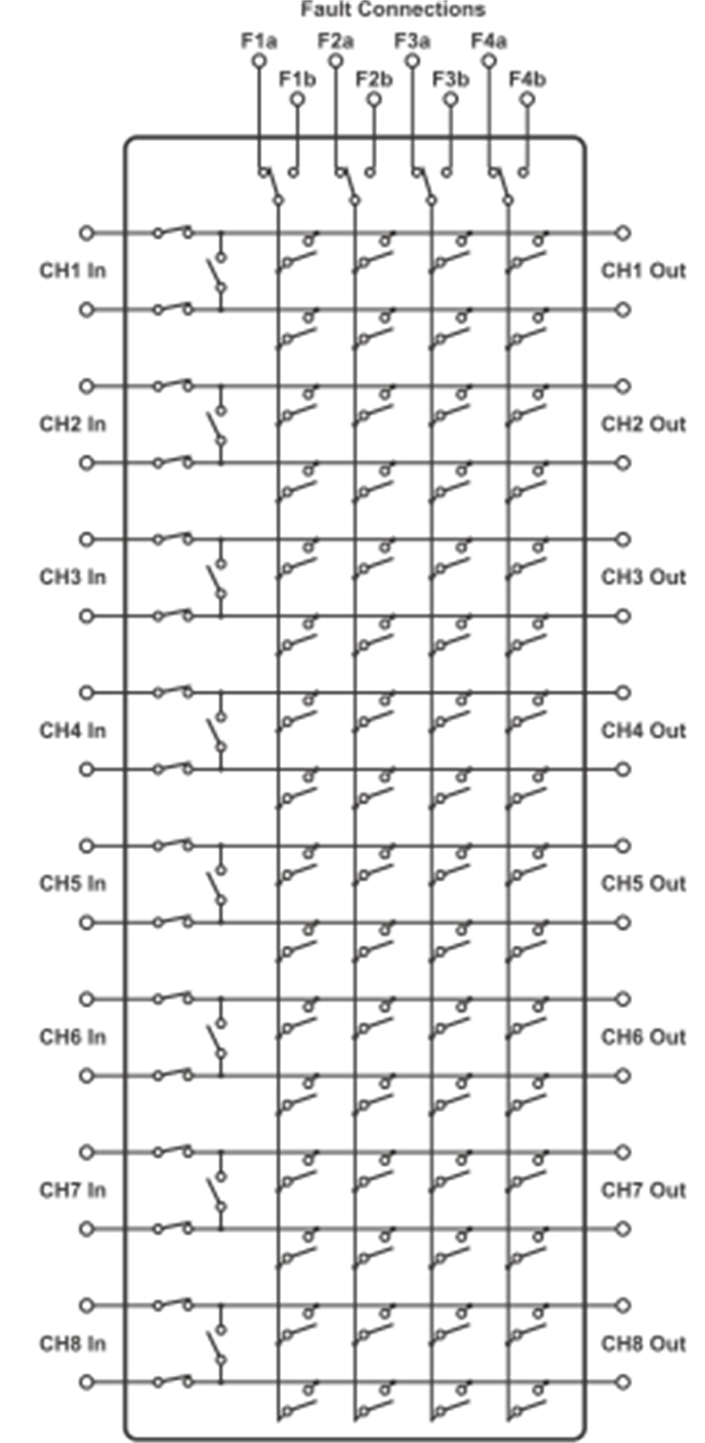Fault Insertion on Serial Interfaces
The most commonly used serial interfaces are based on 2-wire differential pairs or multiples there of. Examples include automotive buses such CAN and Flexray and the more widely used Ethernet standards which are increasingly used in automotive and avionics applications (AFDX).
The serial bus connections are required to be tested in similar ways to other connections, and for many of these systems a fault tolerance has to tested for by performing Fault Insertion (FI) tests. Faults can be shorts to ground, batter or ignition circuits, or simply leakage paths introduced by oil or water ingress. In addition to these tests though shorts across the data pairs and between data pairs have to be simulated. With no faults applied the data path has to maintain the characteristics of the transmission line formed by the differential pair, so fault insertion solutions have to be specially created for that application.
Differential Fault Insertion Module 40-200 
Our PXI fault insertion module 40-200 is designed to allow the introductions of faults on the lower speed interfaces such as CAN and Flexray. It allows a variety of faults to be introduced.
Each channel has a pair of controlled differential paths which can connect to the channels output (the paths are bi-directional so the input and output terminology simply provides a convenient reference identification).
Relays in series with the data paths allow the creation of opens on individual data lines. Relays across the channel inputs allow the application of a short circuit between the data paths.
A further set of four crosspoint switches allows the introduction of more generic faults to external fault connections, or can be used to create shorts between data pairs. Each of the four crosspoint paths can be switched to one of two fault sources.
High-Bandwidth Differential Fault Insertion Module - 40-201
Our PXI Fault Insertion Module 40-201 is designed to provide fault insertion for Ethernet based connections, including 1Gb Ethernet and AFDX.
For Ethernet data signals are carried in either two data pairs (AFDX and automotive) or four data pairs (1Gb Ethernet). This results in a need to have a slightly different architecture to 40-200, it also requires a wider bandwidth and is therefore less tolerant of bandwidth restrictions in its architecture.
Any data path can be opened by use of the input relays.
Short circuits between data pairs can then be created using a crosspoint switch system which has no external connection, a relay allows the first two data pairs to be connected to the second two pairs for applications requiring 1Gb Ethernet (four pairs).
Two crosspoint switch systems allow external faults, such as to ground or power, to be inserted, each from one of two sources.
Fault Protection
With potential faults of ground connection and power supply shorts being available on the external fault bus connections it is possible for users to accidentally introduce connections from power to ground by introducing two different faults. In the default mode the driver prevents this form happening by applying connection rules. An alternative mode allows the user to have full control over the fault insertion with no protection rules. This allows users to close any pattern of relays and manage their own risk.
